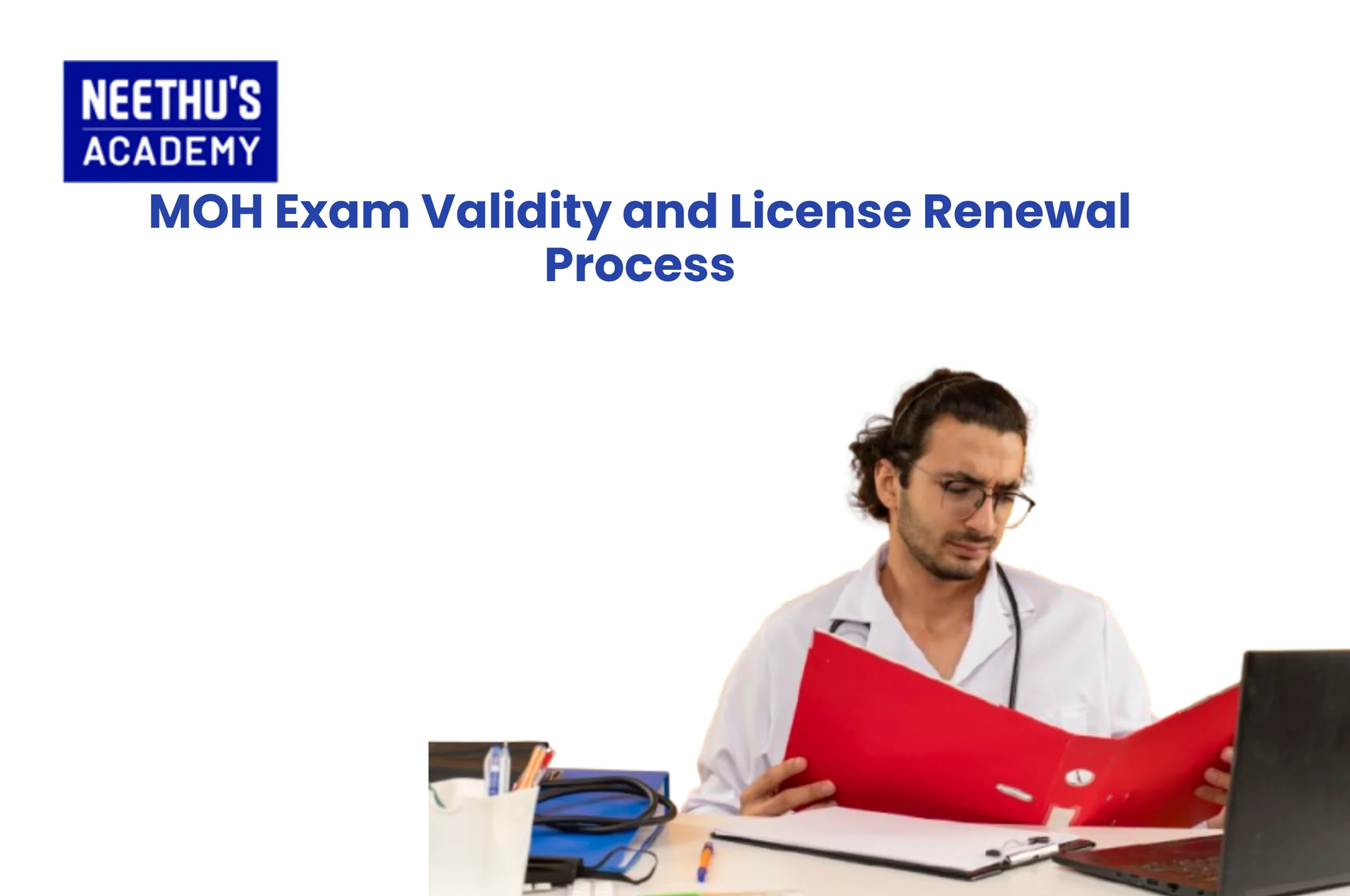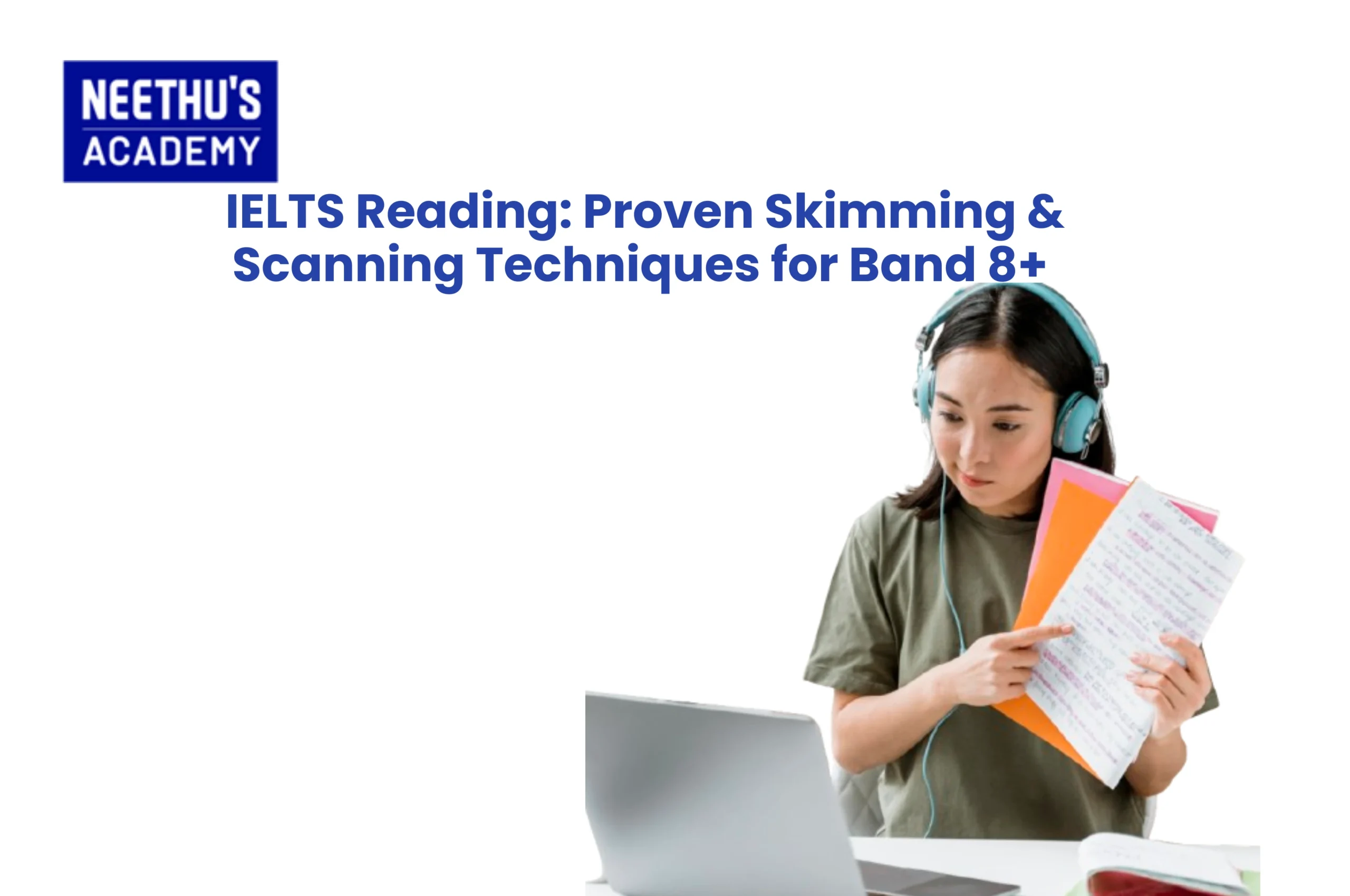Imagine you are running out of time and still have questions to complete! That would be the worst-case scenario while taking a…

How to Improve IELTS Reading Speed and Accuracy: Expert Tips and Techniques
For future IELTS aspirants, the reading section could be quite demanding on the test taker. It tests your skills on comprehension and has time limits that must be followed. It would help if you balanced your score between accuracy and speed to perform very well in this section.
You will also run out of time before you can complete the questions if you read too slowly. It also means you will skim over crucial elements, and you will receive lower grades if you do not take the time to read the material. This blog will explore how to expand vocabulary, read more quickly and effectively on the IELTS, and practice strategies that will produce results on test day.
Understanding the IELTS Reading Section
There are two major types for the IELTS test: Academic and General Training. While the goal of the reading section for both tests is to check your comprehension and understanding of written English, the contents differ:
IELTS Academic: Books, magazines, and journals related to academics are the source of the reading passages. The passages require a more profound understanding because it is more complex and might be unexpected.
General Training: The texts come from a variety of sources – job descriptions, published works, advertising, and manuals-and hence have more relevance to everyday life. Even if the language used is simple, the focus still lies on comprehension.
Question types in the IELTS Exam
Different kinds of questions in both formats of IELTS demand divergent tactics to their answers. Some of these question types include:
- Multiple-Choices questions
- True/False/Not Stated statements
- Matching headings
- Sentence completion
- Diagram Labelling
There are specific demands for each one of the question types and you can increase your accuracy and speed once you memorize them before the test. Not only will you save time by knowing them before the test but also be less prone to committing mistakes.
Time limitations and its impact
The 40 questions of IELTS Reading have to be completed within 60 minutes. With the time constraint so short, assuming you read the passages at full speed, each question should take about 1.5 minutes. If you are not prepared, this can have a negative impact and even force you to make arbitrary decisions and omit some questions altogether.
In case you haven’t got a proper time management plan in place, you might be spending much more on one question and not enough on the others.
Why speed and accuracy are key
You have to strike a balance between speed and accurate understanding of the text to achieve a good score in the reading part of the IELTS. Although you can be absolutely accurate and thus assured that you would be able to understand the material well enough to arrive at the right answer, speed would ensure that you are taking in all the material. Reading through the text so quickly can save time, but will then be followed by errors, especially when important material is ignored. Thus, both speed and precision have to be enhanced.
How to improve IELTS Reading Speed
- Skimming and Scanning
Two techniques help you read faster: scanning and skimming. Scanning and skimming work for all sorts of reading, including IELTS reading.
Skimming is a method of quickly scanning a text to find the most important points in a text. Find the headings, subheadings, paragraph openers, or keywords. This enables you to get the summary of the passage without having to read the text word by word.
Scanning is essentially searching for exact information, such as names, dates, or key words that may be associated with the questions. The technique also performs well when you know what you are looking for. The following techniques will help you save valuable time by avoiding lengthy sections of rereading.
- Practicing with Timed Reading Exercises
The best method for learning how to read faster is through timed reading exercises. Create a challenge for yourself where you have to read a certain portion within a given time. Start at a comfortable speed and gradually reduce it without compromising your comprehension.
Gradually, you will remarkably increase your reading speed, and you will have ample time to dwell on giving the right answers to questions.
- Expanding Vocabulary for Better Comprehension
Another way to accelerate speed is through building vocabulary for IELTS reading. The more the stock in your vocab, the easier it becomes to easily understand difficult parts without halting to consider unknown words.
- Learn new words daily using flashcards or apps like Quizlet.
- Since the IELTS often uses words that differ from those in the text in the question, concentrate especially on learning synonyms.
A large vocabulary directly correlates with an increased reading speed and higher comprehension of the text as well as the likelihood of getting correct answers to a question.
- Avoiding Word-for-Word Reading
One mistake many test-takers make is trying to read a passage word by word. That said, this is neither necessary nor advisable. Focus on the main ideas and key terms rather than on every word. Reading to understand, not word by word, will make reading faster and ensure that you capture the central ideas of the passage, which is usually all you need to answer most of the questions.
Enhancing Accuracy in IELTS Reading
Understanding Question Types
Different kinds of questions in IELTS Reading call for different kinds of responses. There is a need to understand the specific demands of each type of question so as to ensure accuracy. You will quickly come to realize the best way of answering each kind of question by being familiar with its format and honing your skills for its answer. This improves your productivity and ensures that you are ready for the subtleties of the test. Knowing how to skim, scan, or dig for details will deeply maximize your ability to avoid mistakes and accurately answer under time constraints.
Managing Tricky Vocabulary and Synonyms
The most difficult aspect of the IELTS reading test is to handle tricky vocabulary and their corresponding synonyms. A large proportion of questions will carry vocabulary that is different from the text. You can minimize your error count if you practice daily with texts carrying tough words and their terminologies. This will help you better identify synonyms and paraphrasing.
Practice with Mock Tests
Use Mock Tests to obtain accuracy. Attempt these tests under examination like situation to get familiar with question styles and time constraints. Analyze your errors at the end of every test to get an idea of where you are mistaken. You can then concentrate on your weak areas to build them.
Focus on Details
Even as it is crucial not to lag behind, don’t miss the key points. Many reading-based questions in IELTS depend on such minor but vital details as names or dates. Make sure you don’t miss them during the practice by being quick to draw them to your attention.
Time Management Strategies
Time management skills play a very very important role in the IELTS Reading. Generally, one must divide the time equally for all the chapters and pay more attention to the hardest chapters. As you read through the questions, skim each text initially to get a general understanding. Thereafter, try to look for specific answers to it. Give some time at the end to just rush through and validate your answers.
For the harder questions, don’t waste much time. proceed to the easier questions and then come back to the more complicated ones if you have time left. This ensures you get to score as high as possible but at no cost of losing much time.
Conclusion
Improving your IELTS reading is, in fact, a matter of finding that balance between being accurate and fast. You will improve greatly if you can learn some effective skimming and scanning strategies to go with expanding your vocabulary and practicing on a daily basis under time constraints. Regular practice and an efficient use of time will enable you to pass the IELTS Reading section, and soon you’ll come to realize the improvement in your abilities. Good luck!
Related Blogs
- All Posts
- OET
In case you are immigrating to Canada or looking for higher studies in the French-speaking parts of the nation, then the TCF…
Feeling a bit overwhelmed about the OSCE? You're not alone! The Objective Structured Clinical Examination is a big step in your medical…
Course Enquiry
Latest Posts
- All Posts
- canada
- CBT
- DHA
- French
- GENERAL
- German
- Haad
- IELTS
- IQN NEW ZEALAND
- MOH
- NCLEX-RN
- NHRA
- OET
- OSCE
- Pearson Vue
- PROMETRIC
- PTE
- TOEFL
- Back
- NCLEX - NGN
- Back
- OET FOR PHYSIOTHERAPIST
- OET FOR PHARMACIST
- OET FOR DOCTORS



Frequently Asked Questions
Improving reading speed takes place through practice with skimming and scanning techniques and then, at a regular pace, practicing exercises under time constraints.
Improve accuracy in terms of understanding various types of questions, expanding the vocabulary, and practicing mock tests avoiding common mistakes, thus increasing precision.
It is recommended to practice skimming, scanning as well as trying questions in a time allocated manner and see that you have a routine to practice timed reading exercises.
Develop both skimming and scanning to increase the reading speed. At the same time, remain focused on getting the right kind of details for accuracy while answering questions.
